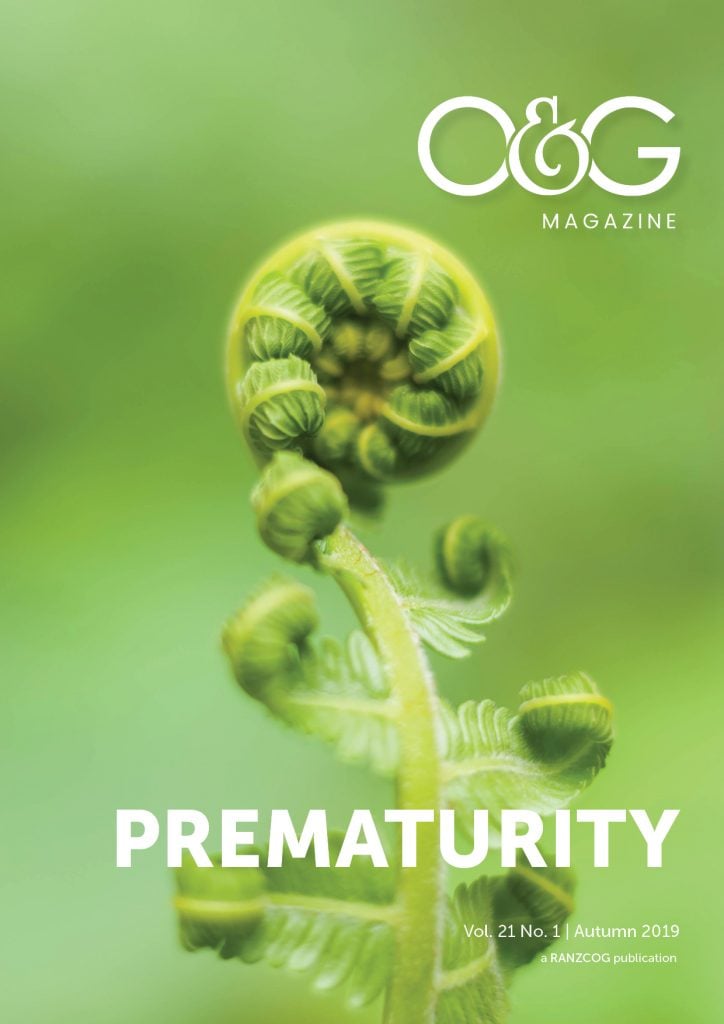We would like to comment on the O&G Magazine Vol. 20 No. 3 Spring 2018. This issue focused on women’s mental health, and perinatal mental health issues constitute an important part of the discussion. It was, however, surprising to find that there was no mention of somatic birth trauma and its psychological consequences. In the past two to three decades, a wealth of research has shown that childbirth is more traumatic to mothers than commonly assumed.
The true incidence of obstetric anal sphincter trauma (OASI), a well-known complication of vaginal childbirth, may be as high as 20 per cent due to missed diagnosis and, possibly, occult trauma.1 Levator avulsion, another major form of maternal birth trauma that is commonly occult and undiagnosed, has been reported in 10–36 per cent of primiparous women after vaginal delivery.2 3 Both forms of birth trauma are associated with pelvic floor dysfunction, that is, anal incontinence, increased vaginal and pelvic floor muscle laxity4 and pelvic organ prolapse.5 There is also an association between physical and psychological morbidity. Women suffering from postnatal physical morbidity were found to experience higher levels of depression.6
In a recent qualitative study on 40 women with known levator trauma, 27 reported symptoms of posttraumatic stress disorder (PTSD).7 In this study, Skinner et al found that participants experienced multiple barriers to help-seeking behavior and felt abandoned by a medical system that did not recognise or identify either somatic or psychological trauma. Healthcare providers were reported to be dismissive, and some apparently trivalised women’s complaints. A lack of knowledge and understanding among health service providers may contribute to this attitude,8 which may further adversely affect women’s mental health.9
The findings of Skinner’s study suggest that women who have sustained somatic birth injuries and resultant emotional distress could be greatly assisted by perinatal clinicians who acknowledge their concerns and provide relevant diagnostic and therapeutic services. Health service providers need to understand and recognise the significance of somatic birth trauma and its potential impact on women’s physical and mental health. Unfortunately, this issue of O&G Magazine missed an opportunity to contribute to this goal.
References
- Oberwalder M, Connor J, Wexner SD. Meta-analysis to determine the incidence of obstetric anal sphincter damage. Br J Surg. 2003;90:1333-7.
- Dietz HP, Lanzarone V. Levator trauma after vaginal delivery. Obstet Gynecol. 2005;106:707-12.
- Shek KL, Chantarasorn V, Dietz HP. Can levator avulsion be predicted antenatally? Am J Obstet Gynecol. 2010;202(6):586.e1-6.
- Thibault-Gagnon S, Yusuf S, Langer S, Shek KL, Dietz HP. Do women notice the impact of childbirth-related levator trauma on pelvic floor and sexual function? Int Urogynecol J Pelvic Floor Dysfunct. 2014;25:1389–98.
- Dietz HP, Steensma AB. The prevalence of major abnormalities of the levator ani in urogynaecological patients. BJOG. 2006;113(2):225-30.
- Brown S, Lumley J. Physical health problems after childbirth and maternal depression at six to seven months postpartum. 107, P1194–P1201. Br J Obstet Gynaecol. 2000;107:1194-201.
- Skinner E, Barnett B, Dietz HP. Psychological consequences of pelvic floor trauma following vaginal birth: a qualitative study from two Australian tertiary maternity units. Archives of Women’s Mental Health. 2018;21:341-51.
- Herron-Marx S, Williams A, Hicks C. A Q methodology study of women’s experience of enduring postnatal perineal and pelvic floor morbidity. Midwifery. 2007;23:322-34.
- Skinner E, Barnett B, Dietz HP. Psychological consequences of pelvic floor trauma following vaginal birth: a qualitative study from two Australian tertiary maternity units. Archives of Women’s Mental Health. 2018;21:341-51.







Leave a Reply